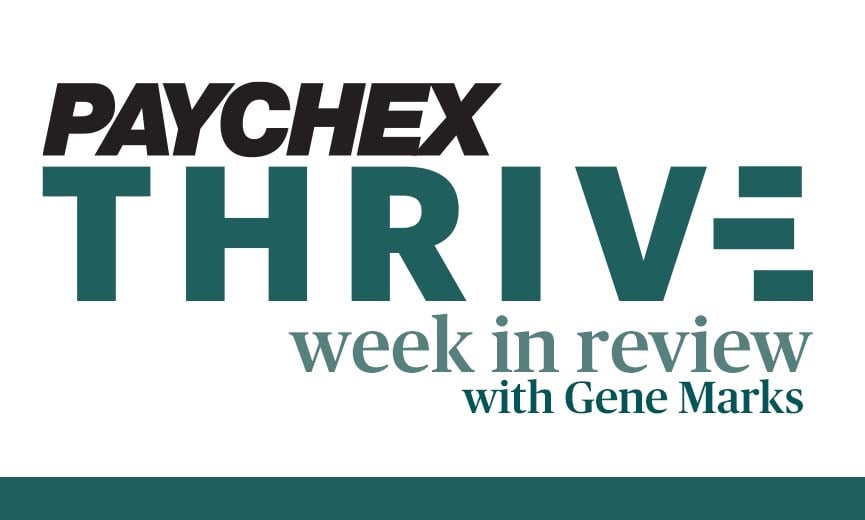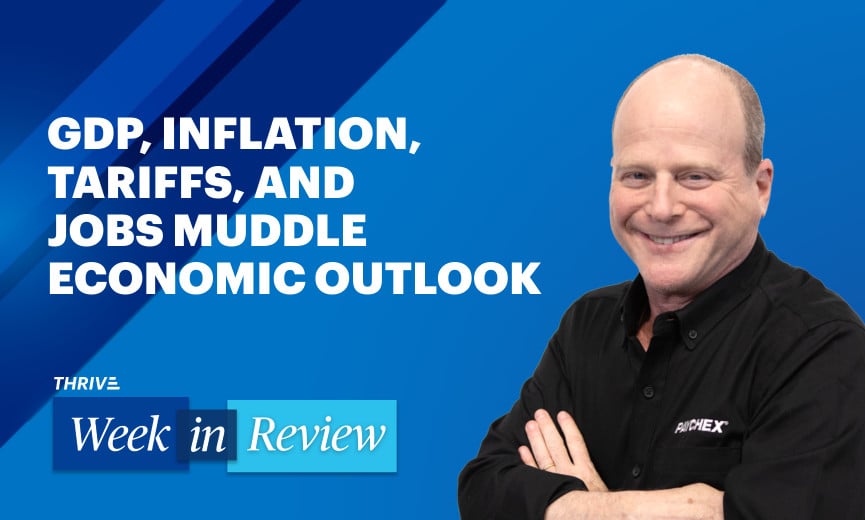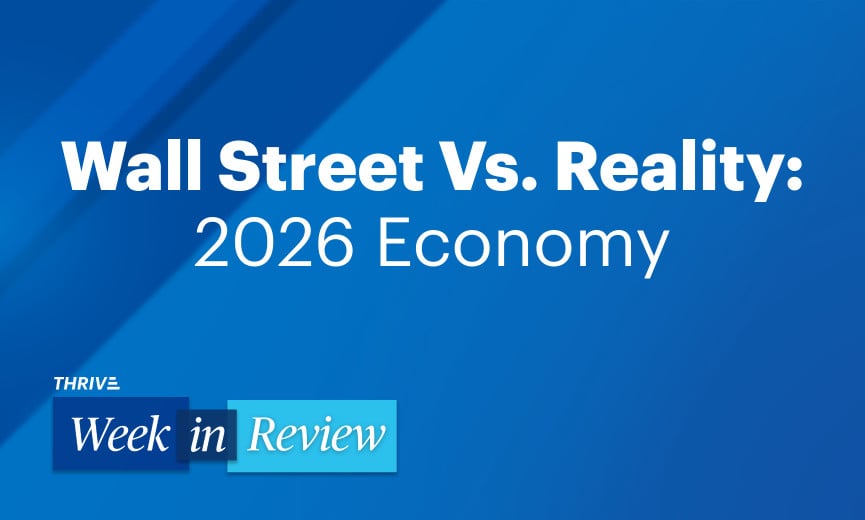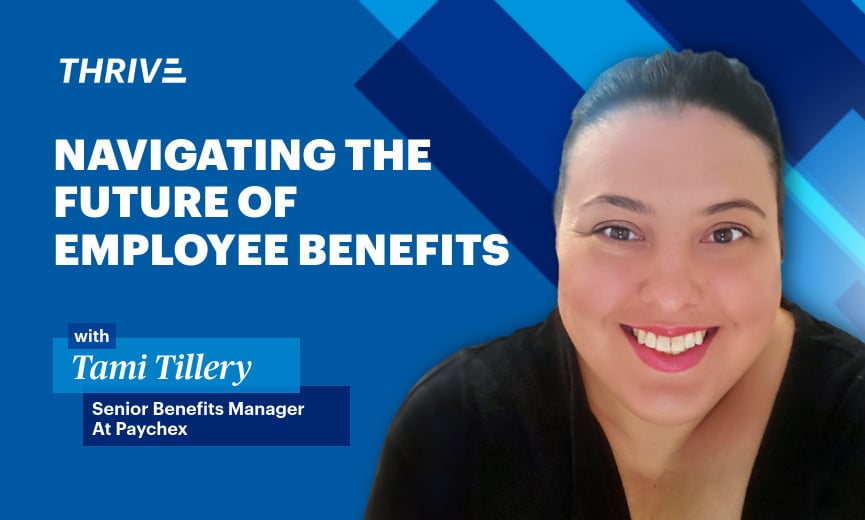- Thrive
-
Season
4Episode133
Hiring Slows, Hourly Wages Increase, Dynamic Pricing, and a Shoplifting Solution

Podcast •

Summary
Data shows growth is moderating for workers, according to the latest Paychex Small Business Employment Watch, and Gene Marks says that employers are not hiring as much and it could be because of a number of reasons. Wendy’s announces dynamic pricing, which flips people out, so the company flips its tactic. Still, Gene says with AI that dynamic pricing is here to stay, and a San Francisco hardware store owner tries to counteract shoplifting, but did he nail it? Listen to the podcast.
View Transcript
[Gene Marks, host]
Hey, everybody, and welcome to this week's edition of the Paychex Week in Review, a podcast. My name is Gene Marks. This is a podcast where we take a few items of news in the week that impact your small business and we talk about it a little bit, make sure that you're got your arms around the news. So, how about if we get right to it?
The first news starts with Paychex. Paychex released its monthly Paychex Small Business Employment Watch just this week, and according to this new report, year-over-year hourly earnings growth for U.S. workers moderated to about 3.42% in February, continuing a trend that began in mid-2022. Small business job growth held steady from last month with the National Small Business Jobs Index closing February at a little bit over 100.
Here's a John Gibson, Paychex president and CEO, said. He said, “While our index continues to show job growth in businesses with fewer than 50 workers, it is now remained below pre-pandemic levels for two months. For the first time since March 2021, a major region has fallen below 100 – that's the Western Region. A tight job market for qualified candidates, access to affordable growth, capital and concerns about inflation continue to constrain small-business owners from reaching their full growth potential.
“Wage growth for small business workers continues to moderate, most notably for weekly earnings in leisure and hospitality. The sector fell below 3% for the first time since January of 2021 and is down from a peak of 10.35%,” CEO Gibson said, as well.
Here's the takeaway from the Paychex numbers. Number one, when we look at jobs, we see that they're moderating, which basically means that the economy is moderating, which means that businesses of all sizes, but particularly small businesses, are not hiring like they were before. So, the message itself, maybe it's a lack of available employees or just businesses holding back; I think it's a combination of a few factors. That's number one.
And number two, year-to-year over hourly earnings increased about 3.42%. That should be a benchmark gauge for you if you're looking to increase your hourly workers earnings this year, even your salary worker's earnings. I am seeing wage increases of about that 3 to 5% for workers. So, the Paychex numbers sort of dovetails into that.
Next up, we have news about the fast-food restaurant Wendy's. Man, they created quite the kerfuffle online last week because they wanted to … they announced they were going to start introducing something called dynamic pricing. The story comes from theweek.com. It's an experiment, and theweek.com says that this announcement was made in February by Wendy's new CEO, who said during an earnings call that dynamic pricing would be among several new features tested up by the restaurant chain this year. Dynamic pricing, sometimes called surge pricing, is the practice of pricing a product based on fluctuating demand.
So many took (Kirk) Tanner's words to mean that Wendy's would raise its price any the time of day, people got upset. So, Wendy's had to sort of back up on their statement. They clarified in a press release that they have no plans to do this dynamic pricing at peak times of the day and they clarified, as well, that even when customers are visiting us most, we will not be taking advantage. If anything, this will allow us to change the menu offerings at different times of day and offer discounts and value offers to our customers during slow periods.
So, here's a couple of comments on dynamic pricing, everybody. First of all, this is going to be reality. With AI coming into the fold and getting smarter and smarter, we as business owners, particularly people in the restaurant and retail industries, are going to find ourselves more able and more affordably able to change our pricing on the go, depending on how popular our products are, how many people are coming through the time of day, the weather outside.
I know Uber does that and we've seen that for anybody that takes Uber. They do it in the MLB, as well, with certain ticket pricing, depending on fan demand. It isn't a new thing. It's just that with AI, it's going to become that much more affordable. The issue that we would have is the same issue that Wendy's had. It’s PR. When Wendy’s announced this, people started freaking out that there's the big company that is going to take advantage of its employee … er, its customers.
So, we're going to want to use this type of pricing model in the future. We'll be able to do it. But our trick is going to have to be how to implement dynamic pricing so that we can maximize our margins whenever we can without, you know, upsetting our customers, as well. That's going to be an interesting thing, and I'll be curious to see how dynamic pricing plays out.
I predict that many businesses are going to be trying this out over the next few years, many smaller businesses. Some are going to be doing it better than others. I’ve got to give it some thought as to the best way to implement something like dynamic pricing. Just be aware.
For Wendy's to announce this and pull back because of a PR issue, that's one thing, but dynamic pricing is going to be in the future for all of us.
Finally, in San Francisco, a store owner is testing out a new way to deter rampant shoplifting. Now, we all know that shoplifting is affecting many retailers all across the country, and anecdotally, people say that it's really bad in San Francisco. I can't speak to that or not, but this is a report on Yahoo News.
It's a long time San Francisco business. It's called Frederickson Hardware and Paint is what it's called, and the owner of Frederickson Hardware and Paint, he says he's going to try something new. He is now offering a one-on-one shopping experience. The idea is to separate actual customers from those looking to steal from the store.
So, how does this work? Well, during certain hours, Frederickson’s will block off part of the store's entrance and will have people wait for an employee to help them instead of allowing people to just roam the store. The store's longtime manager says it's a move that was worth trying for the sake of the business., their employees, and their customers.
The owner of the store is the manager of the store says that for 2 hours in the morning and 2 hours in the evening, an employee will work with individual customers. A table at the front will serve as a way to keep potential thieves from freely moving in and out of the store. The manager says, “Listen, we just want to make it as uncomfortable as possible for the thieves, so they go somewhere else.”
What do you think? Do you think that's a good idea If you're running a retail store. I mean, instead of just letting people come in and browse, they come in, but they're actually accompanied by a store employee the entire time, and they limit the amount of people that are freely roaming around your store. Maybe that will have an impact on shoplifting.
I don't know. We'll see, and will it improve the customer experience or not? And will the extra cost of having the employees do that – maybe you have to hire extra people to do this – will that offset the cost of the loss of shoplifting? So, all of these are interesting factors. I give a lot of credit to this owner for trying this out. We'll see how it works out.
That's the news for this week. You've been listening to the Paychex Week in Review, a THRIVE podcast. My name is Gene Marks. If you have any advice or help or want to suggest guest, please visit us at payx.me/thrive topics. Thank you so much for listening. We'll be back with you next week for some more news that impacts your business and some thoughts and analysis about that news. Take care.
This podcast is property of Paychex, Inc. 2024. All rights reserved.

 Apple Podcast
Apple Podcast Spotify
Spotify iHeartRadio
iHeartRadio








